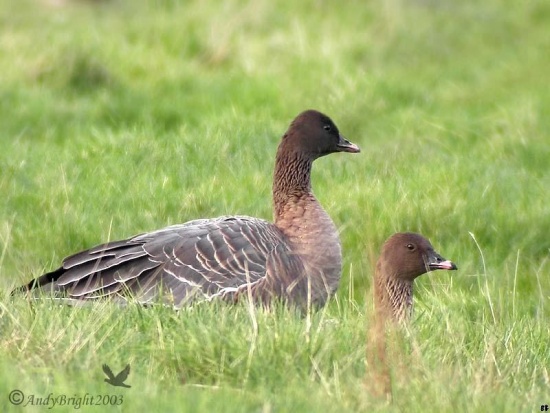
- Anser brachyrhynchus
Identiftcation
60-76cm
- Pinkish grey
- Dark head and neck
- Black bill with varying amounts of pink
- Pink feet and legs
- Dark centre to white tail
- White undertail coverts
Similar Species
Much smaller than Greylag and Bean Goose
Distribution
Breeds only in eastern Greenland, central Iceland and Svalbard.
Western populations leave breeding grounds in late September to late October for wintering areas in the British Isles, mainly in Scotland, fewer in England and now rare in Ireland. Return movement is mid-April to mid-May, peaking in late April. Birds from Svalbard leave breeding grounds in late August to September and pass down the coast of Norway to winter in Denmark, Germany and the Low Countries, mainly the Netherlands. In severe winters some reach Britain and northern France. Returning birds begin to gather in Denmark in March and leave there during April-May. Small numbers breed ferally in Britain.
Vagrants have been recorded in most European countries south to Spain, Italy and the Ukraine also recorded in north-eastern North America, on the Azores, Madeira, the Canaries and on Malta.
Taxonomy
Monotypic
Habitat
Breeds on tundra, rock outcrops or low cliffs. In winter feeds on grassland, stubble and crop fields close to estuaries, lakes and reservoirs for roosting.
Behaviour
Breeding
Breeds singly or in loose colonies. They nest on the ground.
Voice
Call: wink, wink
<flashmp3>Anser brachyrhynchus (song).mp3</flashmp3>
Listen in an external program
References
- Collins Pocket Guide to British Birds 1966
- Collins Field Guide 5th Edition
- Collins Bird Guide ISBN 0 00 219728 6




